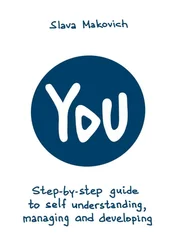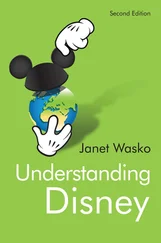Here is a quote suggesting that an aesthetic appreciation of others can occur in asexual people: “I could be attracted to someone. I can… you know, think they’re good looking and think they’re interesting and want to spend time with them and get to know them better. But to me it’s never, oh, yeah, I hope we end up in bed” (Brotto, Knudson, Inskip, Rhodes, & Erskine, 2010, p. 610).
Another asexual person felt similarly: “I love the human form and regard individuals as works of art… but I don’t ever want to come into sexual contact with even the most beautiful of people” (Scherrer, 2008, p. 626).
That having been said, much of the nudity and sex in popular culture and art must be a “disconnect” for many asexual people. A woman I know, when confronting the fact that she does not conform to many aspects of a traditional feminine gender role, utters the phrase, “I must have missed that day at girl school…” Painterly-minded asexual people wandering around galleries with a bevy of nudes at eye level might similarly utter the phrase, “I must have missed that day at art school…”
I must admit that I have cheated in my discussion of art and sexuality. Art is a relatively easy subject matter to deconstruct from a sex point of view, and indeed, I have thought about the sex/art connection for a number of years. As a more difficult challenge, I played a game—a kind of thought experiment—to see if I could find an aspect of modern life and culture untouched by human sexuality. One day at lunch over a bowl of soup, I thought I had, true to my task, thrown myself a curveball and succeeded. I said out loud, “Aha, food !”
On the surface, it seems that the world of food and the world of sex are far removed from one another. They are related to different desires and thus, presumably, occupy very different “psychological spaces” in people’s heads and exist in very different domains of our lifestyles and cultures.
However, I quickly realized that this was not true. It did not take long before the sexual connections to food started coming to mind—and I don’t just mean “cheesy” ones, such as the Food Network sexing up its shows with an attractive chef/host or two (no, I don’t mean replaying old episodes of Julia Child).
Here are the four sexual connections that came to mind relatively quickly: First, food intake and its control are major life concerns for many people—particularly young women—in their attempts to achieve a maximally attractive body. Achieving an ideal or optimal object-of-desire level through a beautiful/sexy body allows a woman to have great advantages in choosing the man (or the men) with whom she mates. This is because men place a greater value on women’s physical attractiveness than women place on men’s, so women’s bodies are of greater value and demand a higher price in the sexual marketplace. But women are not necessarily trying to satisfy only their current partner (if they have one); they are also trying to satisfy an “ideal,” which, from an evolutionary perspective, allows them much greater opportunities to mate successfully, even beyond their current mate. The current ideals are often influenced by the images shown in modern media of (arguably distorted) extremely attractive people, the likes of whom would have been rarely seen for most of our evolutionary history; however, they are readily seen now and have been taken on as modern “ideals” nevertheless. Unfortunately, these “ideals” are so high (and often so unrealistic) (Wolf, 1991) that they are unlikely to be met by the vast majority of women, even if women implicitly perceive them as a way to reproductive success. As a consequence, women are more prone to body dissatisfaction than men, and this is a relatively consistent trend across time (Cash, Morrow, Hrabosky, & Perry, 2004; Mazur, 1986). Women compare their bodies to these “ideal” object-of-desire forms, as represented by supermodels and movie stars, even if the images of bodies portrayed are unrealistically thin or beautiful. But the vast majority of women cannot live up to these ideals. They ultimately put pressure on many women to make themselves beautiful and sexy—to become an ideal object of desire (see also chapter 6 on gender). Controlling food intake—through dieting—is a method women use to live up to this ideal and be maximally attractive to potential mates.
Somewhat in contrast, consider a second food/sex connection: Freud and other psychodynamically minded theorists have argued that overeating can result from defensive processes, including sublimation , or channeling ungratified sexual energy into another activity (in this particular case, eating). [41] There is some evidence that defensive processes can be involved with eating habits and disorders (Poikolainen, Kanerva, Marttunen, & Lönnqvist, 2001).
If this is true, one might wonder whether the current obesity epidemic is partly the result of such a process. Is there something about the modern Western world that is creating a slew of sexually unsatisfied humans channeling their hunger for sex into an appetite for potato chips and candy bars? I also have wondered whether the “middle-aged spread” of so many male suburbanites results from sublimation, when the harem-like pursuits of their teenage and twenty-something years are replaced by a thirty-something domestication: a less sexually stimulating, but more calming certainty of a one-woman marriage. However, one might argue that this reasoning is off base and that one should expect the exact opposite, as our sexual desires are presumably being met more in the modern Western world than they ever have been before (e.g., compare today with, say, the presumed innocence of the 1950s). Actually, I don’t think so. I think—again, perhaps in line with a quasi-Freudian interpretation—that our sexual desires are being met less than they ever have been. This is in part because the modern Western media are raising our sexual expectations, which seems to suggest that hyper-sexed athletes are the societal norm. Thus, even though the reality of people’s sex lives is staying the same, relative to our raised expectations, we are coming up short, sexually speaking.
Another food connection is this: Dietary practices are influenced by sex hormones. There is, for example, evidence that men and women differ in their taste preferences—men being more focused on meat and women being more focused on sweets and fats, a difference that occurs even in children (Caine-Bish & Scheule, 2009). This gender difference is related, at least indirectly, to sex hormones, because these hormones partly underlie sexual differentiation, the process whereby male and female fetuses differentiate before birth. There is also evidence that sex hormones play a role in women’s salt preferences across the menstrual cycle (Curtis & Contreras, 2006). Similar differences have been found in other species (e.g., salt preference over the estrus cycle in female rats). One reason women, relative to men, may have more of a craving for sweets and fats is to build up fat for their curvy bodies. Relative to women, men may crave meat more because their bodies require more protein to build muscle mass. [42] Even if one agrees that taste preferences are influenced by “sex” hormones, does this mean that “sexuality” causes these food preferences? For example, one could argue that the true sexual connection here is indirect at best, because these sex hormones influence food preferences through their effect on biological sex/gender, and not through their impact on “sexuality” per se. Thus, am I conflating sexuality influences with prenatal hormonal influences on biological sex and gender? Perhaps. As mentioned in chapter 6, however, sex and gender are so intertwined with sexuality, and vice versa, that to argue that only sex/gender (completely independently of sexuality) is a significant influence here is misleading. Also, given that these hormones vary across the menstrual cycle and evidently have an impact on food preferences, they are not just acting to cause “prenatal” sex/gender differences but also likely relate to day-to-day adult activities, including sexuality.
Читать дальше












